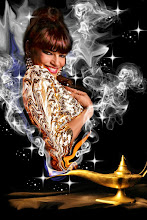Many dancers are at a complete loss over what to include in their dance biographies. For some, just the very idea of writing fills them with dread. Already nervous about putting pen to paper and self-effacing about their accomplishments, they’re diffident about writing anything about themselves that sounds even remotely self-aggrandizing. Others go off in a totally different direction, using florid prose, strings of adjectives and listing every single accomplishment they ever achieved.What you want-and need-in a biography is a happy medium.
Writing your own bio doesn’t need be stressful. A professional dance bio gives the reader a concise overview of the dancer’s career, including her training, specialties, awards and notable achievements. Your biography doesn’t need to be any longer than a full page, or about three hundred words long. A shorter, half page bio is actually better.
Personally, I always have three or four biographies on hand at any given time, which I use for different purposes and diverse target audiences. There’s always a long version, a shorter one, a bio used only at dance events, and a bio that is more suited for the general public.
For example, the bio on my website is on the longer side, so people can find out everything about me, but the biographies I use on printed materials such as show programs or on other websites (for dance festivals or studios where I will be teaching) are much shorter. If I’m submitting a bio to a dance festival, I usually list my teachers and training, but if I’m performing at event that is not dance-centric, I omit that part, because the general public not only has no idea who the prestigious teachers or big names are in the dance universe, they don’t care.
Professional artist biographies are usually written in the third person, but that doesn’t mean they need to be stiff, bland or boring. It’s always good to include a sense of who you are in your bio, and using a little bit of humor also makes you seem accessible and engaging. Don’t get too cutesy; keep the tone professional or people won’t take you seriously. Make sure to include your contact information and website URL on the biography so people can find you.
While you should definitely mention the city or town where you are based, you might want to think twice about including too much personal information- stick to the subject at hand, which is your dancing. Only include items that are relevant to-or that compliment- your dance career.
Keeping your bio updated will also make the biography itself-and you-seem more significant and interesting. Make sure to include recent accomplishments, such as headlining a major show or being featured on the cover of a magazine; the release of new DVD or an appearance in a music video. If you have just won a contest, formed a troupe, produced a show, started teaching a new class series, or will be doing workshops at a festival in the near future, make sure to add that, too.
In addition to recent accomplishments, include your specialties; some ideas to use are mastery of any props or certain styles, the fact that you make all your costumes or are an authority on Tunisian folk dances, or that you are a hula performer in addition to belly dancing, that sort of thing.
Here’s something I learned in my pre-dance years, when I was a working journalist- it might help you decide what facts about yourself you’d like to include or omit. Most of the time, when a writer profiles an artist or public figure, there’s roughly a 90% chance that they will lift full sentences- if not entire sections- directly from the artist’s biography! This shocked me; at first, I thought it was just lazy writing but the practice was so widespread because of deadlines, and it was extremely commonplace at most of the publications I worked for. Keep this in mind, and make sure that whatever content you use in your is worthy of being repeated multiple times!
If you are still at a loss for what to include, refer to examples to get your brain in gear. Do a bit of research and read the biographies of dancers whom you admire. Analyze what works and what doesn’t, what is personable and what seems pretentious. Don’t plagiarize, but do get ideas on tone, structure, and for how to frame certain attributes or accomplishments.
You can also ask your colleagues, peers or teachers to describe certain things they like about your signature style (your innate sense of musicality, your air of playfulness on stage) and incorporate what they said into your bio. Chances are they will come up with plenty of accolades you were too modest to think of!











it is really good to read this article it gives us alot of good and great information thanks for posting it.
ReplyDeletelink your website for free
add free backlinks in india
creat free backlinks
Hi, friend! This article is just amazing! I would say that a lot of people worry about the dance bio writing. It is often that people write such a biography for the first time. It is an extremely significant subject and it is exceptionally popular in light of the fact that each year a great deal of specialists are graduating. Many individuals are occupied with this subject since they are learning right now or they in any event intend to ponder. Your substance is extremely useful to me. I will prescribe it to my companion and partners. I recommend that it can help many individuals.
ReplyDeleteVisit by clicking Click Here for computer tips.
ReplyDeleteIm currently working on my burlesque bio and this sparked some ideas. Thank you so much!
ReplyDelete